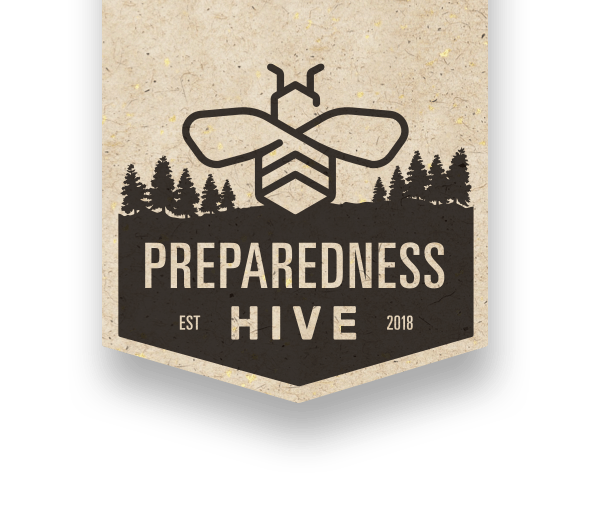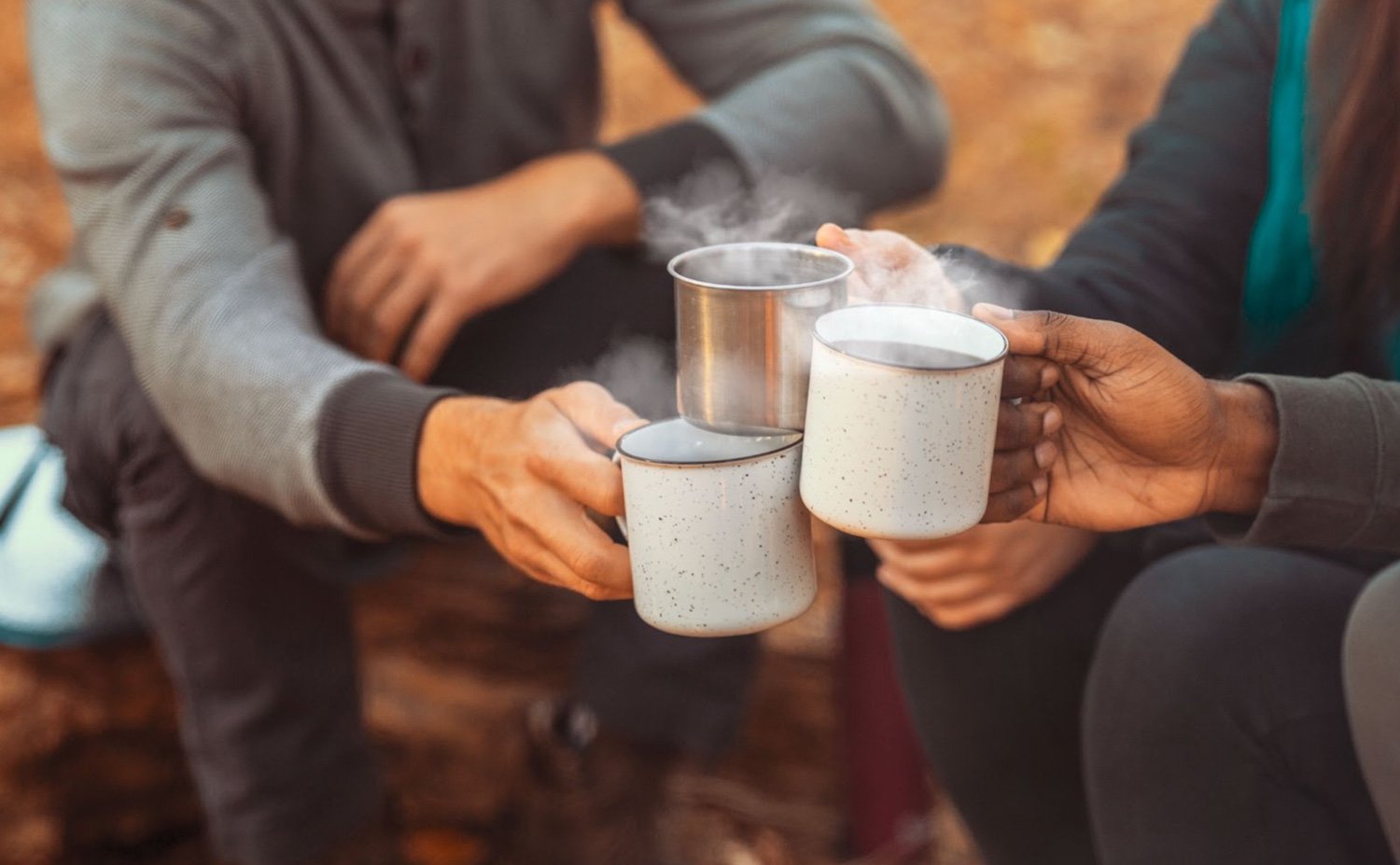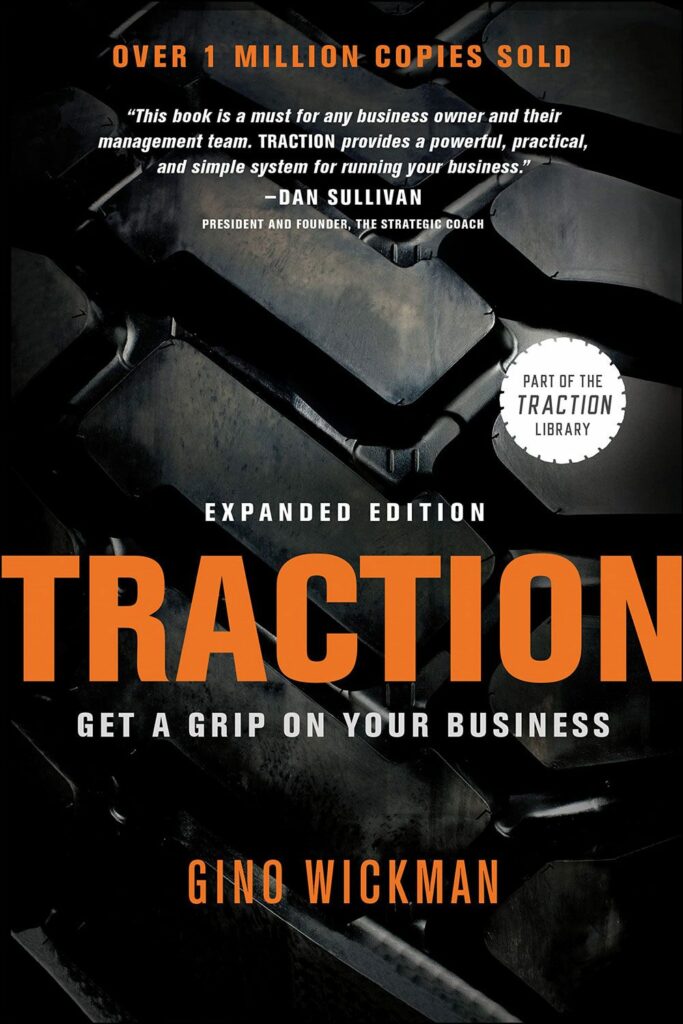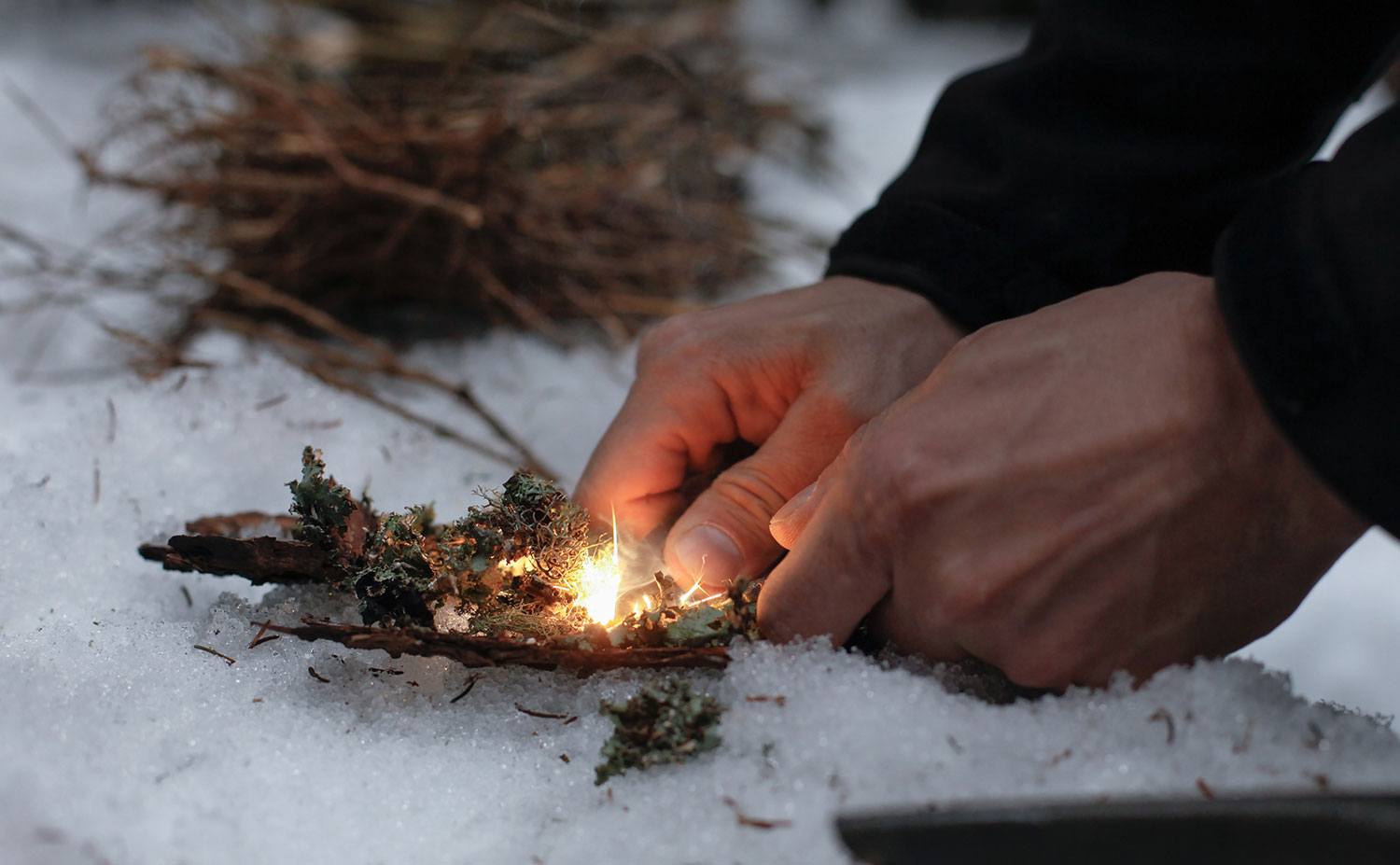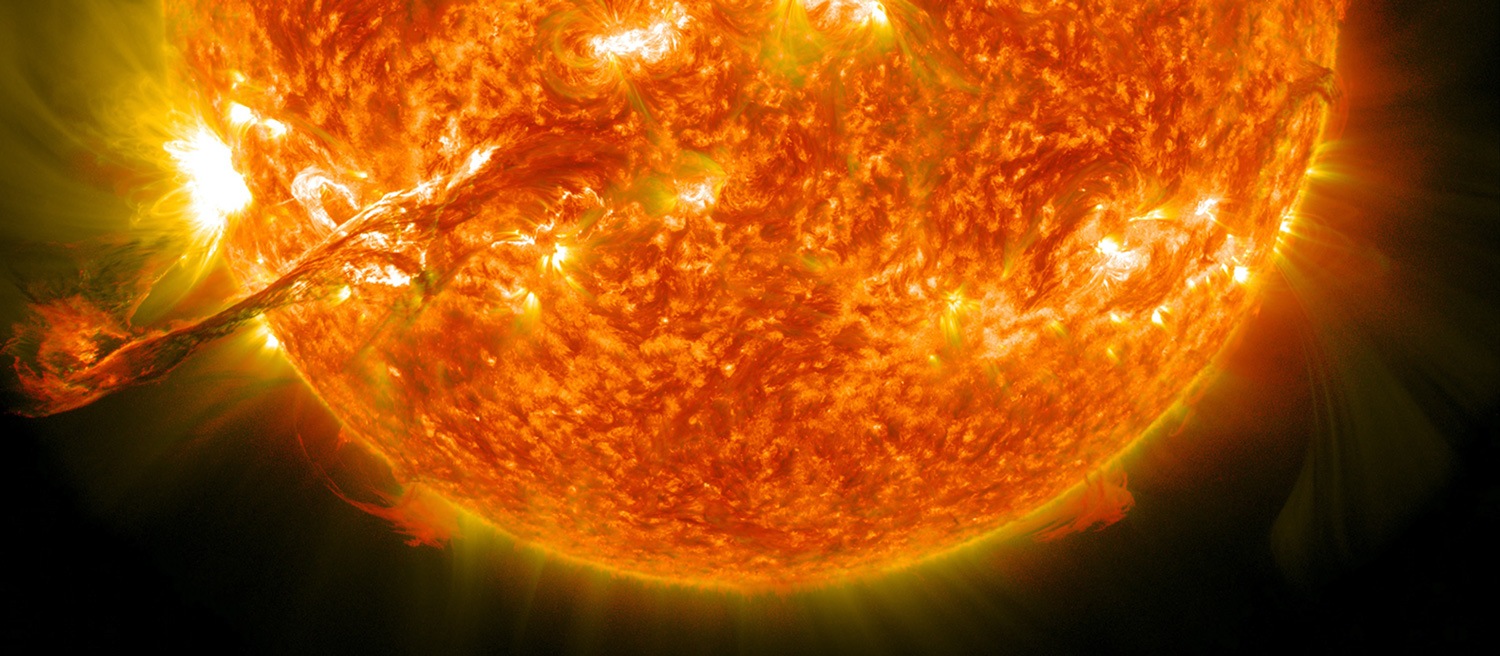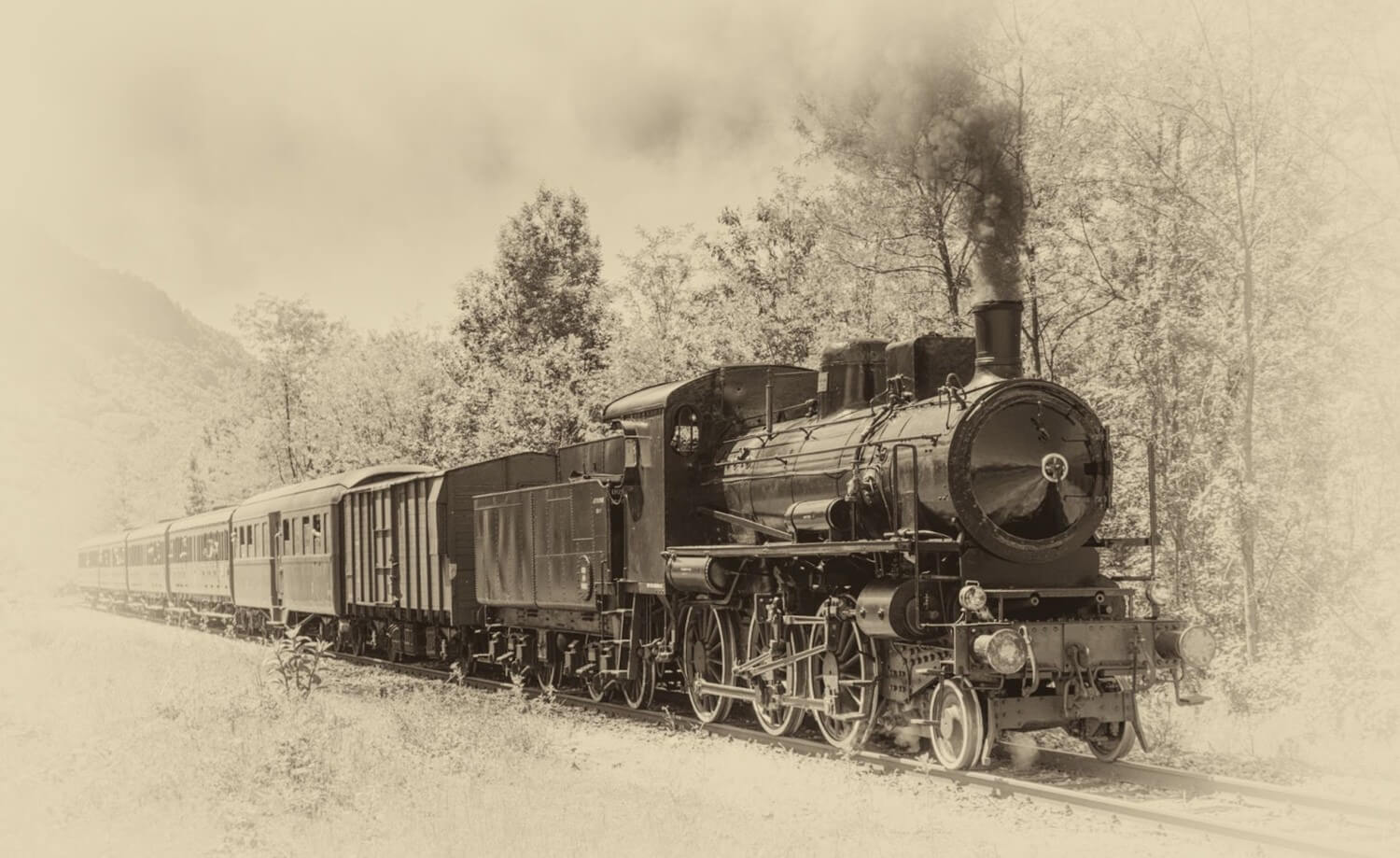Community is by far the most important part of everyone’s preparedness journey, and it’s an integral part every step of the way. While you may be doing this on your own at times, keep in mind that there are so many others out there in the same position as you. You are not alone, neither in belief nor in the journey itself. There are communities of all shapes and sizes, all over the world, built around a common thread of preparedness. Most have unique goals and topics, or skills and techniques, but the intent is the same: to bring people together in an effort to share knowledge and experience, and to be prepared for whatever life brings them.
Preparedness Hive was born out of this same intent. We believe in humanity, and the strength that comes in our collective ability to survive, grow and adapt together. People are not unlike bees in that we thrive most when working together for a greater cause. We all have a purpose here on Earth, and no matter what your spiritual belief may be, our greatest contentment shines through when fulfilling that purpose. You may not know what yours is, as there’s really no definitive way to tell, but striving to understand what resonates most within you will lead you there eventually. Don’t be afraid to lean on others to help you get there too.
When it comes to community, we’re all about it too, and not just our own. We’re in full support of any/all organizations that resonate with our vision for a prepared people, no matter where you live or what resources may be available to you. Knowledge can be given freely just about anywhere, and we aim to do so as much as humanly possible. We encourage you to join as many groups as you can on any/all of the social networks and/or locally if available. If you’re fortunate enough to establish a more extensive group of like-minded people, also known as a MAG (Mutual Assistance Group), or join an existing one, even better.
While it’s overwhelming to think about when you’re first beginning your journey, creating a MAG, or even finding and joining one will happen naturally over time. Typically these begin with your immediate family and then slowly branch out to those closest to you (long-term friends, fellow brothers/sisters-in-arms, business partners, etc). From my years of experience, not just with MAGs but with people in general, there are three factors that will make or break a lasting MAG, or any relationship for that matter:
- Allowance – we’re all different, in virtually every way possible. Expecting someone to think, act, react, learn, behave, understand, or anything else in the same ways you do/are is just not going to work. Any lasting relationship is built upon one’s ability to allow for the other’s individualism and unique characteristics. The more diversity you have in a MAG, the more “well-rounded” you are in terms of knowledge and skill sets.
- Communication – open communication, not matter how difficult it can be at times, is absolutely imperative. Most people avoid conflict like the plague, but it’s in those tense moments where deeper understanding and acceptance can occur between individuals. Communication plans are also equally as important – having an established process and multiple options in terms of channels (phone, email, GMRS, HAM, etc.) should be a part of any group with two or more people.
- Transparency – in simple terms, just be honest with each other and trust that the prevailing spirit is one where everyone has each other’s best interest at heart. There’s no place for secrets in a community, and though no one is perfect, a collective intent to honor those in your community will carry you through the worst of situations without fail.
Being alone in a disaster scenario is the last place you want to be. It doesn’t matter how experienced you are, or how many supplies you have… sooner or later, you will need the help of another. Begin the process of including others in your preparedness journey as soon as you possibly can – you’ll thank yourself later!
So what exactly is a MAG and why is it so important?
MAGs can be quite complex, so I’ll do my best to break them down and help set you up for success. Whether you’re just looking to join an existing MAG, or plan to start a new one, the goal here is to help shed some light on what all is required for a group to thrive in an SHTF situation and what potential skill sets you should expect to bring to the table and/or find within your group.
To start, I am by no means an expert on preparedness-related MAGs specifically focused on surviving an SHTF scenario. You can’t really claim that title unless you’ve created and lived within one (or several) through many different SHTF scenarios… if you know anyone like this, please let me know as I’d love to meet him/her! Gratefully, I’ve never had to live through such a scenario for a prolonged period of time within a group. I do, however, have many years of experience working with, leading and coordinating groups of various sizes through my professional career and entrepreneurial endeavors, as well as through a multitude of travels and interactions with people of vastly different cultures. I’m also part of a small MAG that has been practicing and growing together for a number of years now. This, coupled with decades of preparedness and survival learning, training, teaching and practicing, gives me a fairly good idea of what is most logical and practical when it comes to a successful MAG. Take this with a grain of salt if you’d like, but I hope you can at least find some good nuggets of info here to build upon.
Whether we like it or not, people are somewhat predictable at a high level, and I mean this in a respectful, realistic way. When things are going well we all tend to be a little more amicable and outwardly supportive of one another. Whereas, when we’re feeling cornered or stressed, or perhaps our life is in danger, we tend to pull inward and think a little more selfishly. It’s human nature to want to survive… to do what it takes, almost involuntarily at times. We all believe that our own survival seems to all but fall upon our own individual shoulders, when push comes to shove at least. In other words, we all look out for number one, with exception of our closest family members perhaps. What if there was another way? What if you could expand that basal survival mechanism within yourself to include others? Or extend the unconditional love you have for your spouse or child and hold that same level of appreciation for someone else? Or several others even? Maybe you can and already do, but that’s not common for the most part. This often happens when individuals survive traumatic events together (i.e. – soldiers in war, victims of all kinds, natural disaster survivors, etc.). They become extremely close and deeply trusting in one another. What if it didn’t take a traumatic event to create this kind of bond? Even if you believe this to be a fantasy, take a moment to imagine living amongst a group of individuals that you can be completely and entirely vulnerable with. Where trust is inherent, and no longer has to be continually earned. Where your life is valued as much as all others, and everyone together relies upon each other for their collective survival. Sounds great, but unrealistic, right? Maybe it is, maybe it isn’t.
Mindset will make or break a MAG. My goal here is to encourage you to question the underlying selfish and culturally driven (especially in first world countries) mindset of “my survival is dependent upon myself”, to one that includes the lives of several others… more like, “OUR survival is dependent upon us all”. You are already a part of a larger culture and responsible for your own life, but open the door to being responsible for others at the same level you are for yourself. Culture is the key word here, BTW… the rest will follow.
With regards to being a part of any group, feeling genuinely responsible for those around you, or sometimes just an integral part of a larger purpose, will encourage and create (as I’ve experienced many times over) endless gratitude, appreciation and a deep connection that overcomes almost any challenge it may face. It becomes the culture within your group. No matter where you are in the world, how large or small the group of people are or what their purpose in being together may be, culture will represent the heartbeat of each group. It embodies the proverbial “health” of each and every group of individuals and is systemically fed through all persons individual intentions within a given group. It cannot be created through some controlled means or clever marketing scheme, or even through the envokement of fear tactics. It has a life of its own and will follow the will and true intent of the people as a whole. It comes down to whether you’re just looking out for yourself, or for the collective, genuinely. Either way, it has a profound impact. I can’t stress the importance of this enough as it will directly indicate your group’s ability to thrive, its level of joy, and whether it will ultimately succumb to the pressure of your given circumstance.
A MAG is a family, through and through. The benefit you get with joining or creating one in this context though, is that you’re not stuck with your “blood” relatives. Don’t get me wrong, you may be very close with your immediate family, as am I, and the inherent trust that comes with a lifetime of familiarity can be extremely valuable. With this family however, a place within must be earned – it’s not a birthright. You get to choose the people and environment that you desire, at least pre-event, so please don’t settle for anything less. You very well may spend the rest of your life with the people in this group, so don’t hesitate to be extremely selective and intentional, whether you’re picking a group to join or interviewing members to join a group of your own.
It’s impossible to include everything you need to consider when creating or joining a MAG, but these areas will at least give you a good start:
- Joining a MAG Versus Creating A New MAG
- Leadership and Roles
- Mission, Goals and “Rocks”
Joining a MAG Versus Creating a New MAG
Joining a MAG – There’s no right or wrong as to whether you decide to seek out an existing group or create your own. The one consideration to keep in mind though, is that experience goes a long way and can save A LOT of time. If you find a MAG that’s been together for a number of years, there’s a really good chance that they have a lot of the kinks worked out at this point and function much like a well-oiled machine. While it may prove to be quite a challenge qualifying as a new member (which I’ll talk about shortly), should you succeed you’ll be able to quickly find a place within their operational flow. It’s momentum that I’m referencing here. Momentum is often a direct result of passion, and can be fairly easy to create in the early stages of almost any endeavor you embark upon. Maintaining it however, is entirely different. As an easy reference point, for those of you who are new to preparedness this is probably fairly easy to relate to. You’re likely trying to get your hands on everything you can at the moment, learning as much as possible, gathering supplies, figuring out your plan, etc. (download our free guide if you haven’t already!). There’s an underlying fire within you that allows all this to remain at the top of your priority list. For those who have been preparing for a while, you may relate to the fact that life tends to want to put that fire to rest and other priorities float into place. It can be a real challenge keeping that fire going, let alone roaring. This is where groups and teamwork can be extremely supportive… there will almost always be more accountability and structure within a group than one can muster alone.
When I said that an existing group likely has their kinks worked out and they have an “operational flow”, I’m referencing all the fundamental structure that must exist within a group in order to be successful. I’ll talk about the most important aspects in depth here shortly, but just to list a few:
Organization
- Location and intel
- Establishing values/oath and goals
- Leadership model
- Roles and Responsibilities
- Communication plan(s)
- Meetings and group gatherings
- New member acquisition
Connectivity
- Scheduling and organizing gatherings
- Readiness drills and training
- Team building opportunities
- Resource organization, gathering and maintenance
- Challenge mitigation
- Culture/Morale
Activation
- Plan creation and dissemination requirements
- Emergency/non-emergency activation
- OPSEC requirements
Leadership and Roles
Not everyone is a natural, born leader. In fact, most of us are not. If you believe you would make a good leader, consider how you lead yourself as a simple example. Do you hold true to your word? Can you maintain discipline when it comes to health, nutrition, finances, etc.? How do you speak to yourself? Are your comments full of but’s, should’s and shame, or are they kind, encouraging and loving? Although this isn’t a direct representation, it can give you some sense of how you may be portrayed by others. If this feels discouraging in any way, do whatever you can to change your narrative within. People feel who you are more than hear what you say. While the traits and characteristics of a good leader can be inherent in some, many of the great leaders of lore spent most of their years continually learning and improving themselves. Some of this character can be learned in books, but the best teacher will always be experiential in nature.
Humans, being the pack animals that we are, crave leadership. This may seem cliche, but from my experience thus far in life, nearly every situation, emergency or not, has a greater likelihood of success with someone effectively taking a leadership role. Let me be clear in defining what this is though, and more importantly, what it is NOT. A leader is NOT someone who tells others what to do; who acts as the boss of others; who is in a position of power over others… A true leader IS someone who understands the importance of each and every individual within a given group, and and in most cases puts the wellbeing of others before his/her own; who encourages others to be the best versions of themselves; who sets an example for those around him/her; who is a part of the team, not in control of the team; who shows courage and hope when all feels lost; and who makes sound and timely decisions in consideration of the group. Whomever chooses to be, or is chosen to be the leader, should be one of which these traits are naturally inherent, even if this is not you. Don’t be afraid to be realistic with yourself – it’s ok if this role isn’t well-suited for you. Being in a more naturally inclined role will only improve the likelihood of everyone’s survival.
The leader, as you can imagine, carries the most responsibility within the group. Having been in this role much of my life, I can tell you first hand that it’s not to be romanticized. Rick Grimes, for instance, from The Walking Dead series, played the role of natural leader (for the most part). If you’ve seen the show, you’ll know that he was constantly faced with extremely difficult decisions, peril at every turn and rarely a reward for his actions other than the survival of the group. A leader’s role is often a thankless position, and met with hostility both inside and outside the group. Difficult decisions don’t always end up unanimous, and the leader will often take the brunt of those who may feel slighted or unheard. Leaders also tend to have the biggest target on their back, which makes this one of the most dangerous positions within a group.
Leadership also comes in many different forms as well. The most common for MAGs will be a single leader, especially with groups under 10. As a group increases in size, another option is one led by a committee or council, which can also help divide the responsibility up as needed. One step further would be a full democracy where the majority rules. This of course requires a non-bias individual or system to coordinate voting, which can be a real challenge in and of itself. Elected leaders with different responsibilities (Resource Management, Security, Member Happiness, etc.) can keep these groups running very effectively, as long as there is trust amongst the group. The direction of a democracy tends to follow the overall culture, which can vary wildly the larger it gets (as we see today in the US).
Whether you have a single leader or a group of individuals collectively leading, there are a few characteristics I feel all leaders should possess:
- Integrity – A strong leader will always be true to their word and carry through with whatever actions are needed on behalf of the group, no matter the difficulty.
- Courage – Doing the right thing, regardless of the surrounding circumstances can be terrifying at times. Having the courage to do what it takes without the fear of ridicule or retaliation will be required at times, especially often while under extraordinary circumstances.
- Empathy – You can’t do what’s best for your group without the ability to see and feel the perspectives of those within. Having mercy in times where peril is around every corner becomes increasingly difficult as well; empathy will be the only saving grace in this situation.
- Action-oriented – A leader can only be trusted as long as he/she maintains the ability to take action, and quickly I may add. The quality of those decisions and actions matter too of course, but idleness and leadership are on opposite ends of the spectrum.
Leaders are always being watched and therefore must effectively lead by example. They are “always on” for the most part, which is why integrity is so very important. The members of your group will only participate at the level of their leader(s), so keep this in mind as you press forward.
In addition to leadership, there are a number of other roles necessary for a group’s survival, at least on a long term scale. Thus far, you may be the only one doing all the work to ensure your family’s survival. As soon as it’s possible, be sure to divide some of that work up and assign each of your loved ones and/or friends a role, as well a series of tasks to help share the load and increase your efficiency as a group.
When faced with an emergency situation, executing a plan becomes extremely difficult as your stress levels skyrocket, disrupting your reasoning skills and overall state of rationale. With this in mind, having a clearly defined and easy to follow set of steps becomes extremely important in order to limit the possibility of more chaos. As you begin assigning roles and tasks, be sure to keep all tasks worded in an elementary manner, as if it were assigned to a 7-year old child. This may seem silly, but again, one’s ability to process information becomes severely hindered when pumped full of adrenaline, cortisol and other hormones.
Having been a business owner for more than a decade, I’ve realized that when more than one person is responsible for a given task, no one is responsible. People work together far more efficiently and productively when we have specific responsibilities and some level of accountability. The fewer “hats” one person wears at any given time will allow them to remain that much more proficient and focused on the task at hand. If you have a lot of people in your group, don’t be afraid to delegate roles and tasks as much as possible. Not only will it allow everyone to feel like a contributing member of the group, but as the old saying goes, “Many hands make light work.”
The roles that should be considered as part of your MAG, and moreover your overall preparedness plan, can vary based on the individual skill sets of your group, as well as your environment, group mission/goals and the scenario at hand, among many other factors. Here are a few that I feel are necessary within all groups:
Leader(s). We’ve just reviewed this role in great detail, but here are some tasks a leader(s) may have as part of a preparedness plan – yours may have more/less depending on your specific circumstances:
- Initiate the plan. He/she will be the one who decides when it’s time to enact the plan and will begin the communication protocol.
- Make swift decisions and/or decisions on behalf of the group. Democracy is imperative amongst a group, and transparency as well. Sometimes though, tie-breaking and/or swift decisions must be made on behalf of the group in order to ensure safety.
- Navigate and/or lead the group when traveling. While they can have some help here, it is important for the leader to be “leading the charge” so to speak, and to be aware of any/all routes, variables and ongoing happenings while the plan is in motion.
- Protect the group. The wellbeing and overall morale of the group lies in the hands of the leader as well. This includes protection protocols, food acquisition and/or rationing when needed, defense tactics and protocols, etc.. Basically do everything in their power to keep the group alive and out of harm’s way.
Again, you may have a number of other tasks specific to your circumstance. In all honesty though, your leader should be the one to help document these plans and make sure that all aspects are accounted for. If this is you, then press on; if not, consider including him/her in any plan-forming efforts, if at all possible.
Communication Lead. Once the communications protocol, which should be part of any preparedness plan, has been enacted, you will want someone staying on top of all communication channels. This may include the support of others, and ideally is led by someone well-versed in a variety of communication methods.
The sole purpose of this role is to be sure that all people within the group are up to date at all times, including the leader. Tasks for this role may include:
- Information Dissemination. Whether a communication tree is used – one person contacts two others, each of which then contact two more and so on – or this person is solely responsible for communicating with everyone in the group, this is absolutely vital to everyone’s survival.
- Keep the leader informed. This includes updates about the group and/or any new/incoming information regarding the situation at hand. The better informed the leader is, the more sound his/her decisions will be.
- Determine protocol, methods and channels. This person should have a thorough understanding of all communication methods to be used within the group, which may require ongoing learning. They will create and share the overall plan, as well as the primary and backup channels to be used while in motion.
Asset Lead. With any preparedness plan, there will be a number of assets that must be gathered, packed, loaded and/or distributed. This person is responsible for knowing the locations of any/all assets, potentially delegating responsibilities for who’s gathering what when the time comes, as well as who may need to carry what, depending on circumstance. Tasks for this role may include:
- Asset organization. This person will need to have a clear understanding of all assets needed as part of each specific plan, where they are currently located and who is responsible for getting them from point A to B, should they need to be moved. Keeping an up-to-date inventory list as part of each plan is recommended.
- Asset acquisitions. They will also be responsible for making sure any/all assets needed are acquired prior to the plan being executed. This may mean they need to purchase some items, which from a cost perspective, may need to be split amongst the group in some cases.
- Asset knowledge-base. Ideally this person is also very knowledgeable in the uses and/or skills required to use any/all assets. While everyone in the group hopefully has some sense of (and practice using!) each item being utilized, the asset lead will many times be the most experienced in the group.
- Defense/Security Lead (if not performed by the leader)
- Food Prep (and sometimes rationing, if not performed by the leader)
- Scouter (if well-experienced in bushcraft and/or is stealthy)
- Mediator (high tensions will inevitably lead to confrontations)
- Hunter/Gatherer (if in survival scenario)
Mission, Goals and "Rocks"
One of the most important tasks you can complete when a group is first formed is to establish a mission or an oath of which the group can stand by. As I mentioned earlier, this statement should represent the underlying why behind your group’s existence as well as who you all intend to be. Some go so far as to make this statement an oath that everyone must take in order to become a new member. This may sound a bit ancient in practice, but in my opinion there are few better ways to resonate with a mission than memorizing it word-for-word and having it repeat in your mind forever. Couple that with speaking it aloud to your fellow members and you have a deep rooted accountability that’s hard to break.
Inside you’ll find a six-step process based on the Entrepreneurial Operating System (EOS). These steps apply to any business or group of people as mentioned, and are as follows:
Mission and/or value statements can be fairly succinct and high level, and if possible, allow everyone in the group to contribute to its creation. It is the foundation of your group, and the more people you have participating and understanding things at that level, the higher your probability of success will be. I’ll reference this book a few more times to follow, but Traction (shown to the right) is priceless when it comes to establishing, organizing and growing any group of people. It’s geared toward entrepreneurs and small businesses, but it’s easy to strip out those aspects that don’t apply and adapt all aspects to what is needed for your situation. IF YOU’RE STARTING A NEW GROUP, USE THIS BOOK. PLEASE. Even if for one simple reason in addition to all the other benefits you’ll gain: Your time is valuable. This system will teach you how to make the most of your time while encouraging accountability in all aspects (with all individuals). I can’t stress the value in this enough, as a group will need contributing members in order to sustain long-term.
Inside you’ll find a six-step process based on the Entrepreneurial Operating System (EOS). These steps apply to any business or group of people as mentioned, and are as follows:
- Vision – helps you establish your mission statement and get everyone in the group 100% on board with where you’re going and how you’re going to get there.
- People – help put “the right butts in the right seats”. In other words, it will help you figure out the strengths and weaknesses of each individual and make sure they’re maximizing their potential within a given role.
- Data – This part will need to be adapted to focus more on your group resources and assets, but it’s centered around hard numbers and facts.
- Issues – helps show you how to identify and deal with problems, on any level, quickly and permanently.
- Process – this step helps you identify the many facets and unique factors that are required for your group to function seamlessly. With each individual bringing different skills to the table, you will need to create a process for everyone to work together efficiently.
- Traction – this is all about accountability and discipline… where the rubber meets the road. You’ll maintain a 1-2 page document that effectively acts as your ongoing organizational plan and can significantly limit any unnecessary meetings ongoing.
